In 2025, spatial computing—a blend of augmented reality (AR), virtual reality (VR), mixed reality (MR), and 3D spatial mapping—is revolutionizing enterprise operations across India’s $150 billion fintech sector (Inc42, 2024) and beyond. With India’s 100,000-strong startup ecosystem (MSME Ministry, 2024) and a 6.5% GDP growth rate (UJA, 2025), spatial computing empowers businesses in manufacturing, healthcare, retail, and education to enhance productivity, training, and customer engagement. From immersive training in Bengaluru factories to virtual showrooms in Mumbai, these solutions drive efficiency and innovation.
Why Spatial Computing Matters for Enterprises in 2025
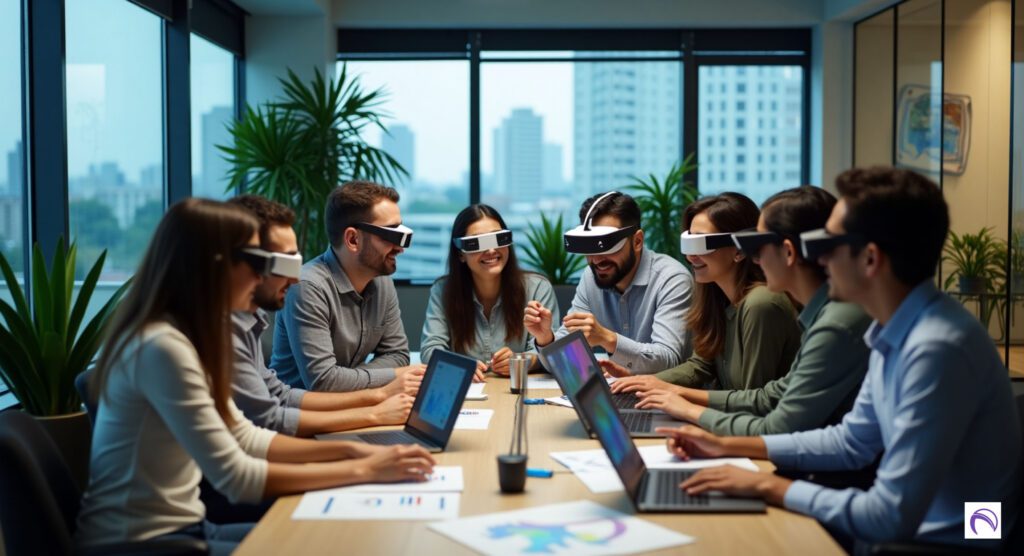
Spatial computing integrates digital content with the physical world, using AR glasses, VR headsets, and 3D sensors to create interactive experiences. In India, where 70% of businesses prioritize digital transformation (Knight Frank, 2024), spatial computing addresses challenges like workforce training, remote collaboration, and customer engagement. With 60.1% financial inclusion (RBI, 2024) and rising cyber threats (23,158 incidents in 2023, CNBC TV18, 2024), secure, scalable solutions are critical. Spatial computing reduces costs (e.g., 30% savings in training, Economic Times, 2024) and boosts efficiency, making it ideal for India’s 63 million MSMEs and large corporations.
As a technology expert, I’ve seen spatial computing transform operations. This guide explores seven key enterprise solutions for 2025, offering actionable insights for businesses.
Key Spatial Computing Enterprise Solutions for 2025
1. Immersive Workforce Training
Spatial computing enhances training through VR simulations, allowing employees to practice complex tasks like machinery operation or surgical procedures in a risk-free environment. For example, Tata Steel uses VR for worker safety training, reducing accidents by 25% (Economic Times, 2024). AR overlays guide technicians in real-time, improving efficiency in manufacturing hubs like Chennai.
Actionable Tip: Partner with providers like Varjo for VR training solutions; explore at varjo.com.
2. Remote Collaboration and Design
AR and VR enable remote teams to collaborate in 3D virtual spaces. Tools like Microsoft HoloLens 2 (₹3.5 lakh, Microsoft, 2025) allow engineers in Hyderabad to design products with global teams, visualizing 3D models in real-time. Spatial computing reduces travel costs by 40% for India’s IT firms (FICCI, 2024).
Actionable Tip: Use Spatial.io for virtual meeting rooms; sign up at spatial.io.
3. Enhanced Retail Experiences
Retail businesses leverage AR to create virtual showrooms and try-on experiences. For example, Lenskart’s AR app lets customers try glasses virtually, boosting sales by 20% (Financial Express, 2024). Spatial computing enhances e-commerce in India’s $70 billion retail market, offering immersive shopping from Delhi to Tier-2 cities.
Actionable Tip: Integrate AR try-ons with Shopify’s AR tools at shopify.com.
4. Healthcare Simulation and Diagnostics
Spatial computing transforms healthcare with AR-guided surgeries and VR therapy. Apollo Hospitals uses AR to assist surgeons, improving precision by 15% (Economic Times, 2024). VR simulations train medical students in Bengaluru, reducing training costs by 30%. These tools enhance patient outcomes and scalability.
Actionable Tip: Explore Medivis for AR surgical solutions at medivis.com.
5. Manufacturing and Maintenance
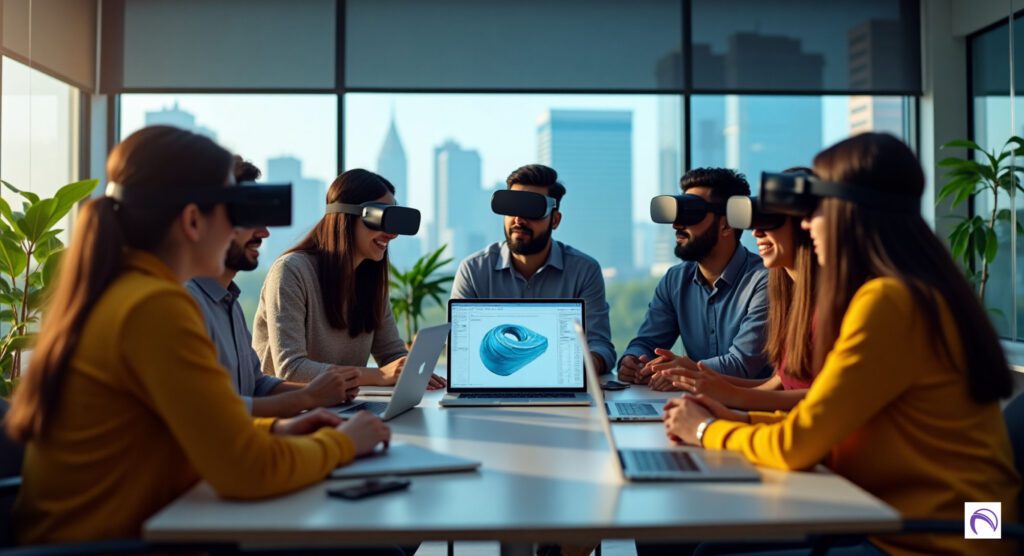
AR overlays guide maintenance technicians, displaying real-time data on equipment. For example, Siemens India uses AR glasses to reduce downtime by 20% in factories (FICCI, 2024). Spatial computing optimizes supply chains for India’s 63 million MSMEs, enhancing productivity in industrial hubs like Pune.
Actionable Tip: Adopt PTC’s Vuforia for AR maintenance; learn more at ptc.com.
6. Education and Skill Development
VR classrooms and AR learning modules enhance education, especially for India’s 60% digitally included population (RBI, 2024). Platforms like zSpace offer interactive science lessons, improving student engagement by 35% (EdTech Review, 2025). These tools are ideal for colleges and training centers in Tier-2 cities like Jaipur.
Actionable Tip: Try zSpace for immersive education at zspace.com.
7. Data Visualization and Analytics
Spatial computing visualizes complex datasets in 3D, aiding decision-making in finance and logistics. For example, HDFC Bank uses AR dashboards to analyze market trends, improving forecasting accuracy by 25% (Inc42, 2024). This is critical for India’s fintech sector, handling 50% of global UPI transactions (NPCI, 2024).
Actionable Tip: Use Tableau’s AR integration for 3D analytics; explore at tableau.com.
Spatial Computing Enterprise Solutions 2025
| Solution | Details | Benefit |
|---|---|---|
| Workforce Training | VR simulations, AR-guided training. | Reduces accidents, cuts training costs by 30%. |
| Remote Collaboration | 3D virtual meeting spaces, HoloLens 2. | Saves 40% on travel, enhances design efficiency. |
| Retail Experiences | AR try-ons, virtual showrooms. | Boosts sales by 20%, improves customer engagement. |
| Healthcare | AR surgeries, VR therapy, training. | Improves precision, reduces training costs. |
| Manufacturing | AR maintenance overlays, real-time data. | Cuts downtime by 20%, optimizes supply chains. |
Benefits of Spatial Computing for Enterprises
- Cost Efficiency: Reduces training, travel, and maintenance costs by 20-40% (FICCI, 2024).
- Scalability: Suits MSMEs and large firms across India’s diverse markets.
- Customer Engagement: AR/VR experiences increase sales and retention in retail and fintech.
- Innovation Edge: Aligns with India’s Digital India and startup ecosystem (MSME Ministry, 2024).
Actionable Tip: Start with a pilot project, like AR training, to test spatial computing’s ROI.
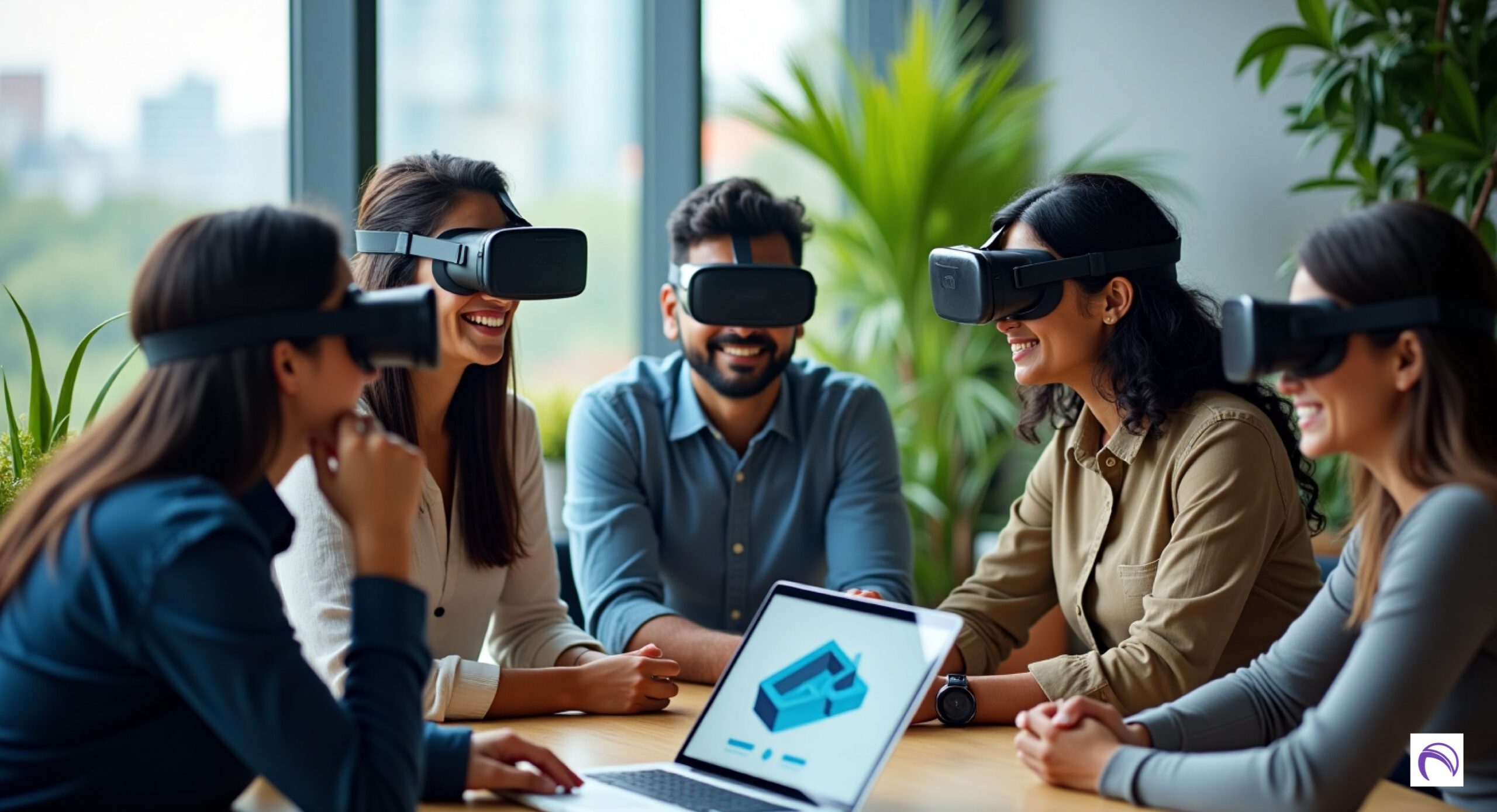

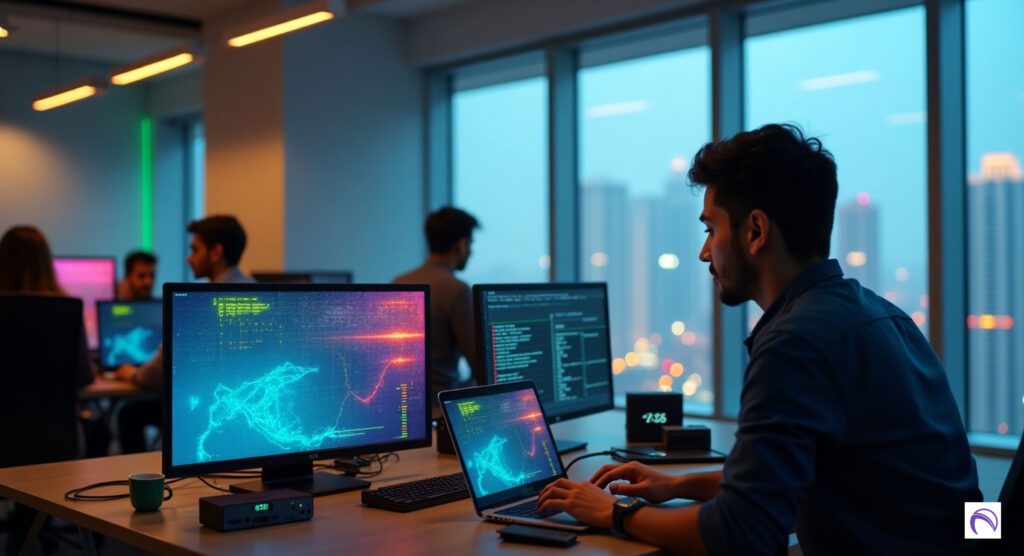


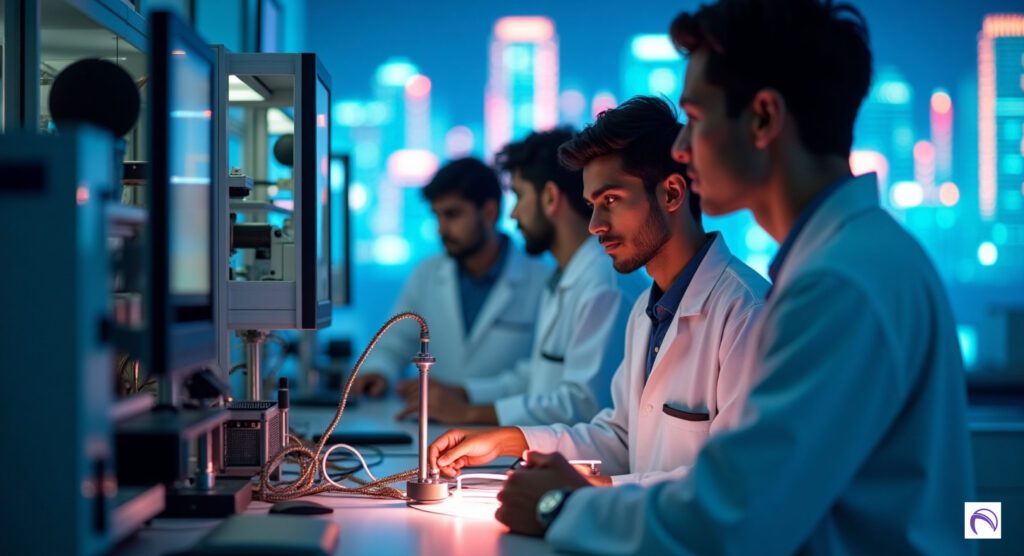
4 thoughts on “Spatial Computing Enterprise Solutions in India 2025: Transforming Business Operations”